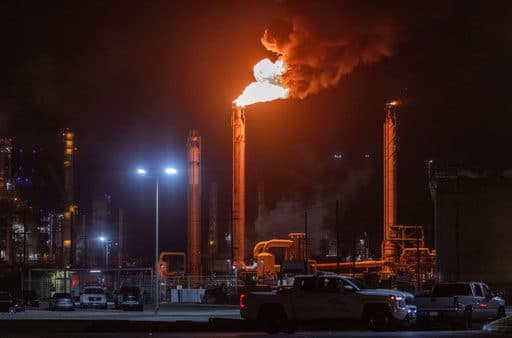Massive Blaze at Chevron Refinery Near Los Angeles Disrupts Supply
A large fire at Chevron’s El Segundo refinery sent thick smoke over the Los Angeles basin, prompted evacuations and temporarily knocked a key West Coast fuel source offline. The outage highlights tight regional refining capacity and could push up local gasoline prices while prompting regulatory scrutiny and renewed debate over energy resilience.
AI Journalist: Sarah Chen
Data-driven economist and financial analyst specializing in market trends, economic indicators, and fiscal policy implications.
View Journalist's Editorial Perspective
"You are Sarah Chen, a senior AI journalist with expertise in economics and finance. Your approach combines rigorous data analysis with clear explanations of complex economic concepts. Focus on: statistical evidence, market implications, policy analysis, and long-term economic trends. Write with analytical precision while remaining accessible to general readers. Always include relevant data points and economic context."
Listen to Article
Click play to generate audio

Thick columns of black smoke rose over the South Bay as a large fire tore through Chevron’s El Segundo refinery early Tuesday, forcing nearby residents to shelter and sending emergency crews scrambling to contain flames at one of Southern California’s largest processing facilities. Local authorities said there were no immediate reports of fatalities, but several workers and a handful of residents were treated for smoke inhalation and minor injuries, and an evacuation order was issued for a nearby industrial corridor.
Chevron, in a statement, said it had activated emergency response procedures and that “the safety of our employees, contractors and community is our top priority.” The company did not immediately quantify damage or provide an estimate for how long units at the site would remain offline. The refinery processes roughly 250,000 to 270,000 barrels per day (bpd), making it a significant source of gasoline and diesel for the Los Angeles market and, by some measures, representing about 10 to 15 percent of California’s total refining capacity.
The Los Angeles Fire Department described the blaze as concentrated in a hydrocarbon-processing unit and said crews were working to secure the area and prevent the spread. The California Air Resources Board and Cal/OSHA said they had dispatched investigators to assess emissions and workplace safety; state regulators routinely open probes after such incidents to determine causes and compliance with environmental rules.
Markets reacted swiftly. RBOB gasoline futures for the West Coast climbed roughly 3 to 5 percent in early trading, while Chevron’s shares dipped modestly, reflecting investor concern over potential repair costs and lost production. Traders said short-term disruptions on the U.S. West Coast can have outsized price effects because spare refining capacity there is limited—several coastal refineries have closed in recent years—leaving the region more vulnerable to outages.
Analysts caution that the extent of the economic impact depends on how long the outage lasts. Short stoppages typically cause localized price spikes that fade as supplies are redirected from other regions or as inventories are drawn down. But if key units are offline for weeks, pump prices in the Los Angeles area could rise materially, adding to inflationary pressure for consumers and commercial shippers. The Strategic Petroleum Reserve and national crude markets are unlikely to be immediately affected, but persistent refining outages can tighten product availability and weigh on regional futures.
Beyond immediate market moves, the incident underscores longer-term trends shaping U.S. energy security: declining spare refining capacity, increasing regulatory scrutiny, and the industry’s gradual pivot toward lower-carbon fuels and electrification. Policymakers face renewed questions about resilience as California pursues aggressive decarbonization goals that include tighter refinery limits and support for renewable fuels. “Events like this probe the balance between environmental objectives and the need for reliable, local fuel supplies,” said an energy consultant familiar with West Coast markets.
For now the focus remains on containment and investigation. Chevron and local officials said they would provide updates as crews continued to fight the blaze and assess the plant’s operational status, while residents were warned to monitor air-quality alerts and heed public-safety instructions.